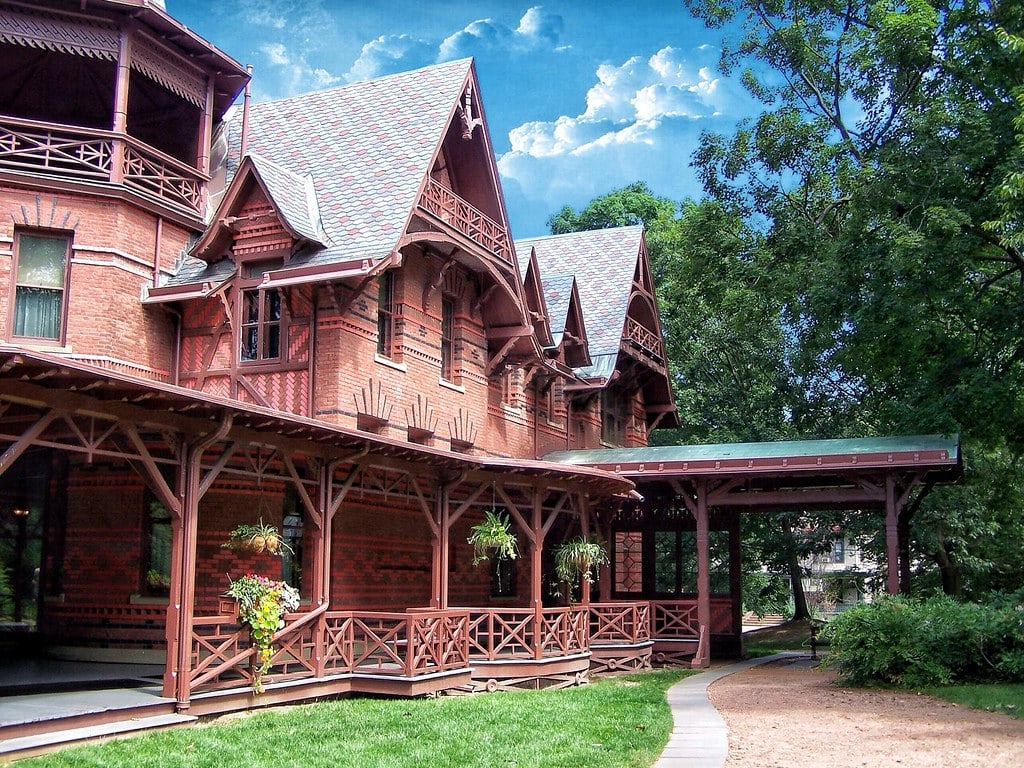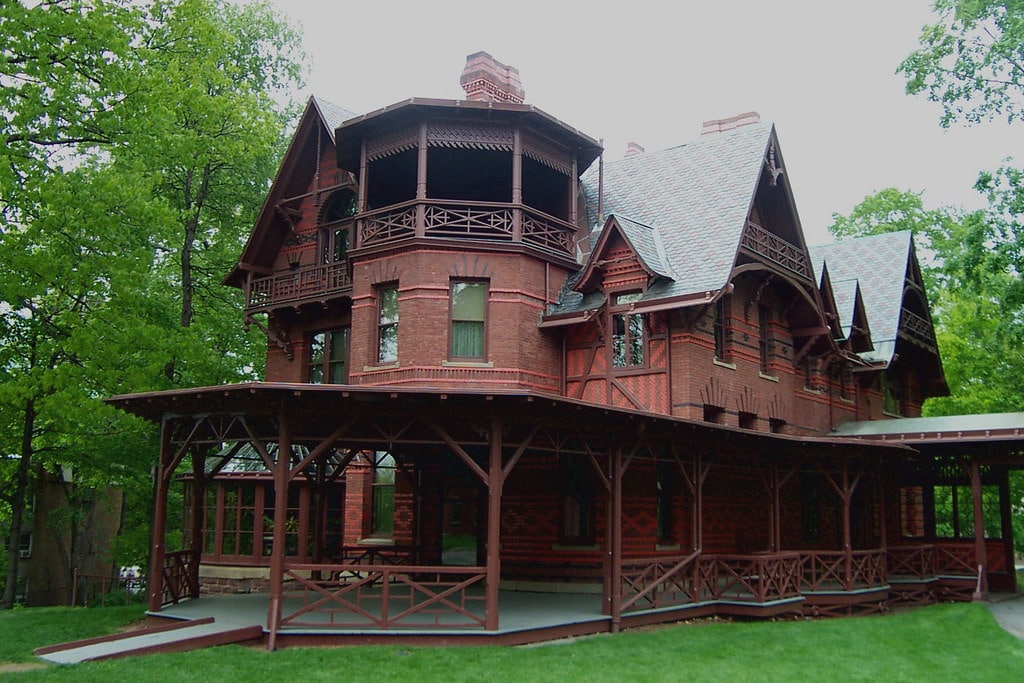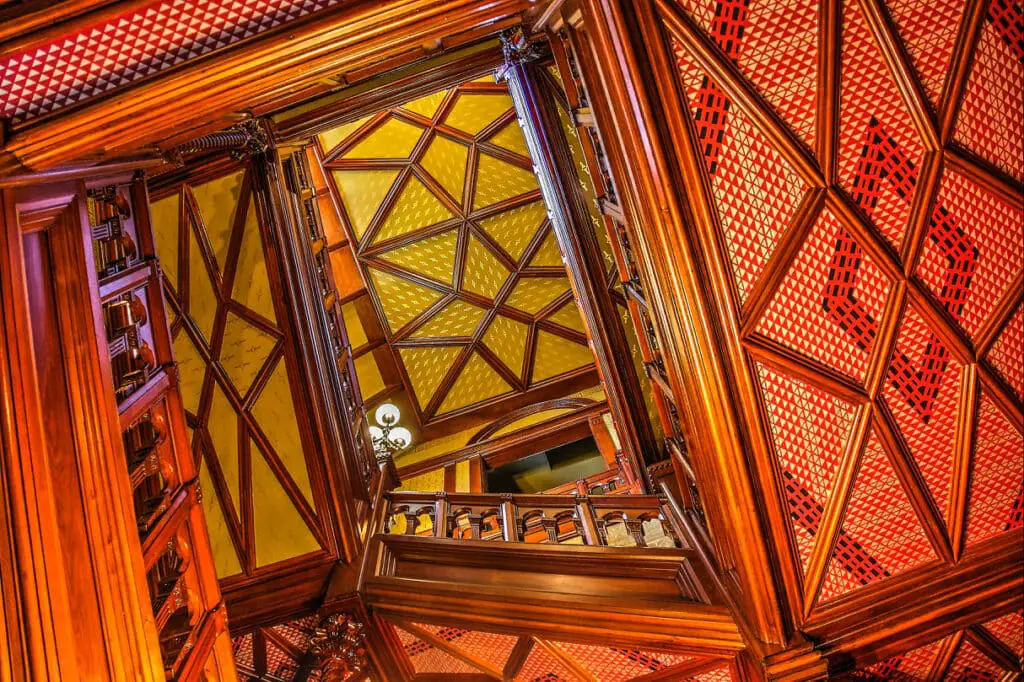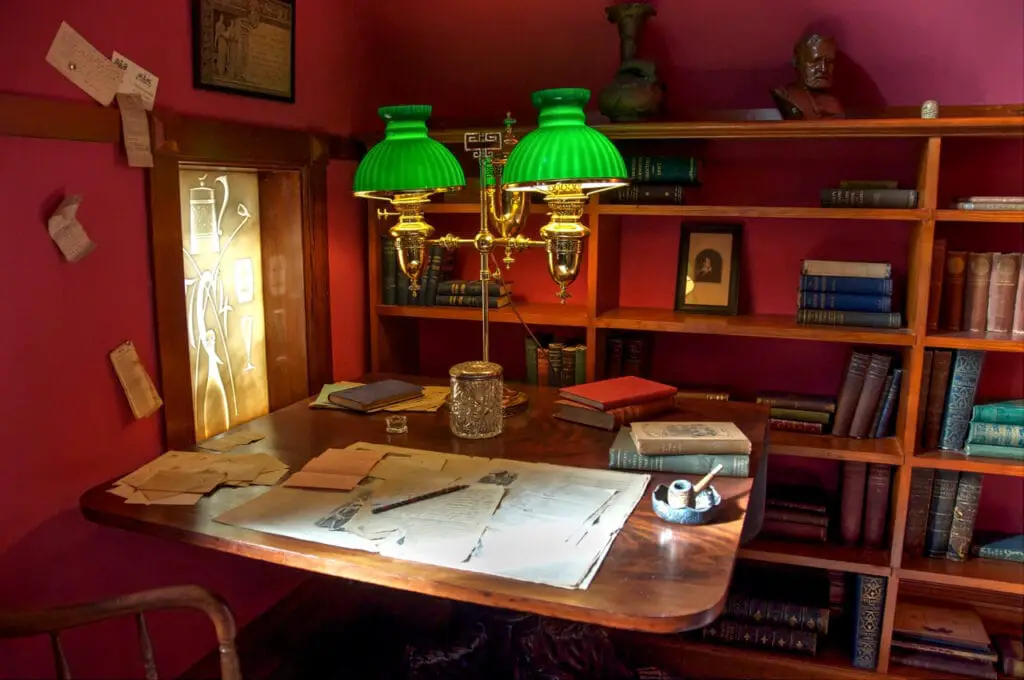The Birth of a Landmark
In 1874, Hartford, Connecticut, witnessed the rise of a structure that would become a beacon of American literature. The Mark Twain House, designed by Edward Tuckerman Potter, stands as a testament to Victorian Gothic architecture and the life of Samuel Clemens, better known as Mark Twain.
Twain, a literary giant, envisioned a home that would not only house his growing family but also serve as a sanctuary for his creativity. The construction, initiated in August 1873, became a physical manifestation of Twain's success and aspirations.
Despite the challenges of delays and escalating costs, the Clemens family moved in on September 19, 1874. The final price tag ranged between $40,000 and $45,000, a hefty sum at the time, reflecting the family's wealth and the home's grandeur.
This house was more than a residence; it was a hub for Hartford's cultural elite and a nursery for some of Twain's most significant works. As I delve into the history, I'm struck by the blend of personal triumphs and tragedies that marked Twain's years here.
It's fascinating to think about how the joy of Twain's most productive years contrasted sharply with the financial woes that eventually forced the family to leave their Hartford haven in 1891.
The Mark Twain House now stands as a monument to Twain's legacy, attracting visitors from around the globe.
It's a cornerstone for things to do in Hartford, Connecticut, offering a glimpse into the life of one of America's most beloved writers.
I find transforming this personal space into a public museum a compelling narrative of preservation and memory. This story continues to unfold more than a century later.
A Hub of Creativity and Tragedy
The years the Clemens family spent in the Mark Twain House were a whirlwind of creativity and personal upheaval.
I often reflect on how Twain, amidst the comfort of his elaborate home, penned works that would become cornerstones of American literature.
It's intriguing to think about him writing "The Adventures of Tom Sawyer" and "Adventures of Huckleberry Finn" within these walls. In my eyes, the house served as a silent collaborator to his genius.
However, life at the Twain residence was not without its sorrows. The death of Twain's daughter Susy in 1896 is a stark reminder of the fragile balance between joy and despair.
This tragedy, coupled with Twain's mounting financial troubles due to poor investments, like the Paige typesetting machine, paints a picture of a family caught between their public persona and private struggles.
The decision to move to Europe in 1891 was driven by necessity, not desire. I can only imagine the heartache Twain felt, leaving behind the home that had been a source of immense joy and profound sorrow.
The family's subsequent sale of the property in 1903 marked the end of an era, turning the page on a significant chapter in their lives.

Mark Twain House: From Home to Historical Site
The transformation of the Mark Twain House from a private residence to a public museum is a story of community and perseverance.
After the Clemens family sold the property, the house saw various uses: a school, an apartment building, and even a library branch. The thought of such a historic landmark facing possible demolition is unimaginable to me.
Thankfully, Katharine Seymour Day, Twain's grand-niece, spearheaded efforts to save the house in 1929. Her dedication to preserving her great-uncle's legacy is inspiring.
The formation of the Friends of Hartford organization, which raised significant funds to secure the property, is a testament to the community's commitment to cultural preservation.
The house's designation as a National Historic Landmark in 1962 was pivotal, ensuring its preservation for future generations. The restoration efforts, culminating in the museum's opening in 1974, were a labor of love and dedication.
I admire the meticulous work that went into restoring the house to its former glory, allowing visitors to step back in time and experience Mark Twain's world.
A Museum of Memory and Imagination
Today, the Mark Twain House is a museum, a treasure trove of history and imagination. I find transforming this personal space into a public exhibit fascinating and vital.
The museum showcases Twain's life and work and serves as a beacon of inspiration. The LEED-certified visitors' center, opened in 2003, represents a blend of historical reverence and modern sustainability, a feature I deeply respect.
I am intrigued by the museum's thematic tours, which provide a narrative of not only Twain's life but also his era.
The museum's hosting of events featuring literary giants like Stephen King and John Grisham speaks volumes about its cultural significance.

Moreover, the writing programs and awards sponsored by the museum are a fantastic way to nurture new talent, continuing Twain's legacy of storytelling.
What captivates me most is the museum's ability to maintain the essence of Twain's spirit. The original furnishings, the Tiffany-decorated interiors, and the personal artifacts offer a glimpse into Twain's world.
It's as if the museum acts as a bridge, connecting the past with the present, inviting visitors to wander through the corridors of history.
Financial Challenges and Community Support
The journey of the Mark Twain House & Museum has not been without its financial hurdles. The 2008 crisis posed a significant threat, reflecting cultural institutions' broader challenges.
However, the response to this crisis is a testament to the strength of the community and the value placed on preserving history.
The swift action by the state of Connecticut, corporations, and individual donors to pull the museum back from the brink of financial ruin is commendable.
The 2010 embezzlement incident was a shocking betrayal, yet the museum's recovery from such a blow is remarkable. It underscores the resilience and dedication of the museum staff and supporters.
The transparency and accountability demonstrated in the aftermath rebuilt trust and ensured the museum's survival.
The financial support from organizations like the Lincoln Financial Foundation and the National Endowment for the Humanities, which fund educational programs and restoration projects, highlights the collaborative effort to keep Twain's legacy alive.
I admire the museum's commitment to education, offering free admission to military personnel and their families under the Blue Star Museums program.
This initiative honors service members and ensures that the museum remains accessible to a broader audience, reinforcing the importance of cultural and historical education.

The House Today: Events and Innovations
The Mark Twain House & Museum continues to evolve, embracing its historical roots and the demands of a modern audience.
Introducing the Blue Star Museums program, offering free admission to military families during the summer, strikes me as a brilliant move.
It opens the doors to a diverse group of visitors, ensuring that Twain's legacy reaches as many people as possible.
I find the museum's innovative approach to engagement, like the "Sam's Shorts" series, particularly compelling. By highlighting lesser-known works of Twain, they're preserving history and expanding it.
The Clemens Conversations, a series of virtual events, is another example of how the museum adapts to the digital age, making Twain's world accessible worldwide.
Recent grants, such as the $20,000 from the Lincoln Financial Foundation, underscore the museum's ongoing support and belief in its mission.
These funds help maintain the property and support educational programs that bring Twain's work to life for students and visitors. It's heartening to see such a commitment to education and preservation.
Reflections and Future Prospects
Reflecting on the Mark Twain House & Museum, I'm struck by its resilience and the enduring appeal of Twain's work. The museum is a testament to the power of literature and the importance of preserving our cultural heritage.
The challenges it has faced, from financial struggles to the need for constant restoration, mirror the trials Twain himself endured.

Looking ahead, I see the museum continuing to play a crucial role in literary and historical education. The blend of traditional and innovative approaches to storytelling and engagement has set a precedent for cultural institutions worldwide.
I believe the museum will continue to adapt, ensuring that Twain's legacy remains relevant for future generations.
The Mark Twain House & Museum is more than a historical site; it's a beacon of American literature and a reminder of one person's words' impact on the world.
As we move forward, I hope the museum maintains its commitment to education, preservation, and innovation, keeping Twain's spirit alive for years to come.
